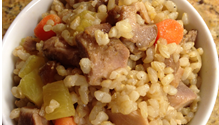By Amanda Andrei
This blog post is a follow up to our article about gluten allergies which you can read here: http://www.asianfortunenews.com/2013/07/hidden-intolerance-and-allergies-gluten-sensitivity-in-the-asian-pacific-american-community/
Lately when walking through grocery aisles, I’ve noticed that more and more packaging highlights the ingredients a product doesn’t have (gluten-free, dairy-free, soy-free, rice-free). Reacting to the health concerns of their consumers, producers are giving them more choices—ones without common allergens.
Lactose intolerance is the inability to digest lactose, a natural sugar found in milk, and therefore other dairy products such as cheese, ice cream, and yogurt. Compared to other ethnic groups, Asian Americans are more likely to have intolerance towards lactose—probably in part due to Asian cuisine lacking dairy sources. Because Asian Americans may lack the amounts of calcium or other vitamins that are found in dairy, this can lead to bone health issues later—one of the reasons that Asian Americans are so prone to osteoporosis.
Another common allergy is found in soy. The soybean is an East Asian legume that is used widely throughout the world as an inexpensive source of protein and oil. Obviously Asian products such as tofu, miso, natto, and tempeh are made of soy, but this product also exists in products such as textured vegetable protein and other meat substitutes, monosodium glutamate (MSG), baked goods, condiments, butter substitutes, and candies.
And for a much less common allergy in America, but one that would be devastating to an Asian American – the dreaded rice allergy. Reported cases of rice allergies are rare in the West, but studies on allergic reactions to the grain were conducted in Japan in the 1990s and Korea in 2011, both suggesting that health issues with rice are on the rise. As rice is a staple in most Asian diets, it is critical to identify ways to prevent and live with such intolerances or allergies.
So how do you find substitutions for these foods?
For milk, there is now a dazzling array of options—from cold milk made of soy, almonds, coconut, or flax, to non-refrigerated products made of hemp or rice—all with options of being sweetened, unsweetened, or flavored with vanilla or chocolate. You can also find soy, coconut, or almond in the forms of cheese, yogurt, and ice cream.
Substitutes for soy are a little more difficult. Depending on the recipe, firm tofu could be replaced by beans, and soft tofu might be replaced by some of the dairy-free yogurts mentioned. Instead of soy sauce, try coconut aminos. And as an alternative to miso paste, try a bean paste or mixing tahini with anchovy paste.
And for rice? Your best bets are quinoa for that fluffy texture—and it may also be good for soups and porridge. Amaranth may also be a good substitute for a thick congee. Rumor also has it that cauliflower run through a food processor and then steamed or microwaved with water can also suffice—but I hear it’s better with sauce or gravy than just plain.
One final note on food allergies, and how they affect Asian Americans specifically. In 2010, Gallup completed its one-millionth survey for the Gallup-Healthways Well-Being Index, a measure of Americans’ daily health and well-being. They found that Asian Americans have the highest well-being out of all the racial and ethnic groups.
However, this does not directly correspond to Asian Americans being the healthiest populace—it may mean that Asian Americans are less likely to report health-related problems. Someone may not even realize that he or she has an allergy to something as essential as rice—and making the change to a healthier lifestyle can be difficult. Fortunately, as the grocery aisles reflect, this change is becoming easier and more available to the wider community.
Most common food allergies:
1. Peanuts
2. Tree nuts
3. Cow’s milk
4. Eggs
5. Fish
6. Shellfish
7. Soy
8. Wheat
Asian Fortune is an English language newspaper for Asian American professionals in the Washington, DC metropolitan area. Visit fb.com/asianfortune to stay up to date with our news and what’s going on in the Asian American community.
 Asian Fortune Your source for all things Asian American
Asian Fortune Your source for all things Asian American



